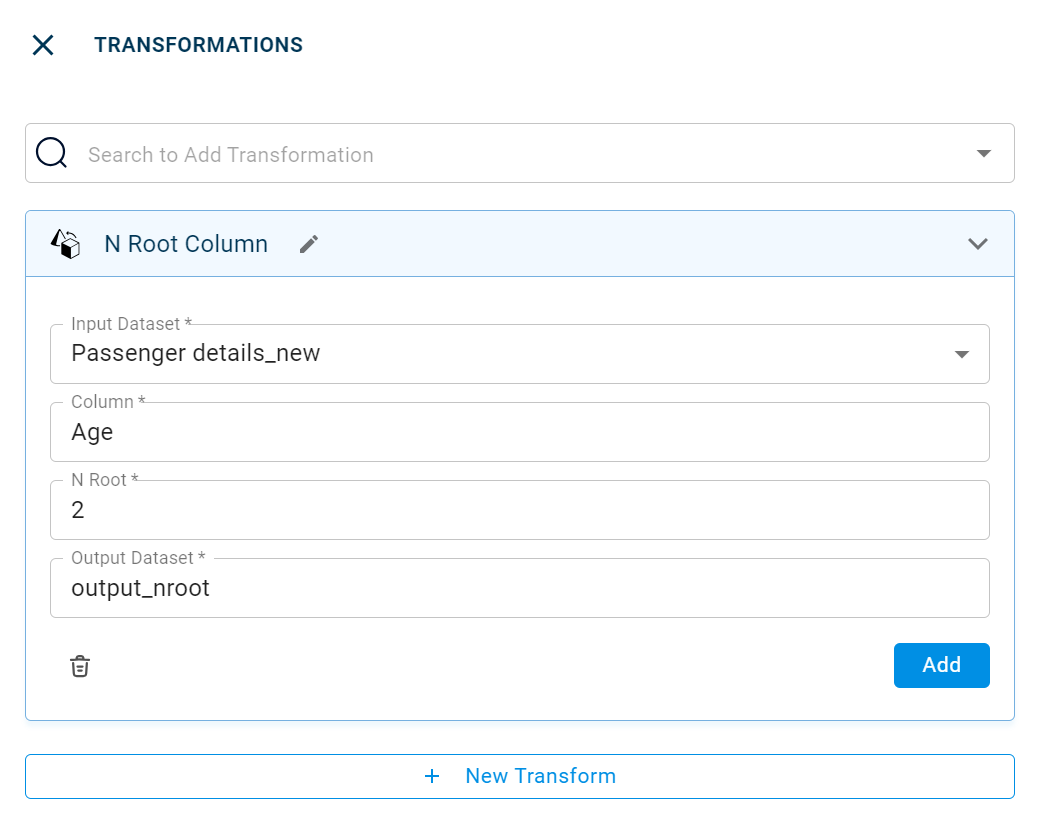N Root Column
This transform finds the specific root of every element in a column of the dataset (which can be 2nd root of a number, 4th of a number, 8th of a number, and so on).
tags: [“Data Preparation”]
Parameters
The table gives a brief description about each parameter in N Root Column transform.
- Name:
By default, the transform name is populated. You can also add a custom name for the transform.
- Input Dataset:
The file name of the input dataset. You can select the dataset that was uploaded from the drop-down list. (Required: True, Multiple: False)
- Output Dataset:
The file name with which the output dataset is created. This contains the nth root of every element in the given column. (Required: True, Multiple: False)
- Column:
The name of the column to which the nth root must be applied. (Required: True, Multiple: False, Datatypes: [“STRING”], Options: [“FIELDS”], Datasets: [“df”])
- N Root:
The specific number to be applied as a root to every element in the given column. (Required: True, Multiple: False, Datatypes: [“FLOAT”], Options: [“CONSTANT”])
The sample input for this transform looks as shown in the screenshot.

The output after running the N Root Column transform on the dataset appears as below:

How to use it in Notebook
The following is the code snippet you must use in the Jupyter Notebook editor to run the N Root Column transform:
template=TemplateV2.get_template_by('N Root Column')
recipe_N_Root_Column= project.addRecipe([car_data, employee_data, temperature_data, only_numeric], name='N Root Column')
transform=Transform()
transform.templateId = template.id
transform.name='N Root Column'
transform.variables = {
'input_dataset':'only_numeric',
'output_dataset':'ncds',
'col':"Age",
'n':5}
recipe_N_Root_Column.add_transform(transform)
recipe_N_Root_Column.run()
Requirements
pandas